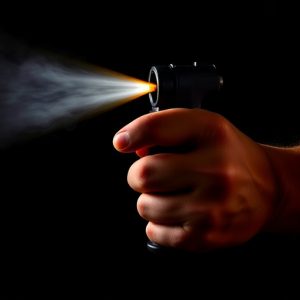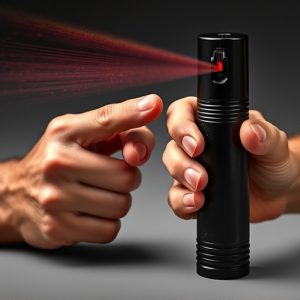Safely Navigating Pepper Spray: Understanding and Treating Exposure
TL;DR: In case of accidental pepper spray exposure, immediately remove contaminated clothing, rinse…….
TL;DR: In case of accidental pepper spray exposure, immediately remove contaminated clothing, rinse affected areas with water for 15 minutes or more, and move to a well-ventilated area. For eye irritation, keep eyes open and continue washing until stinging stops. Over-the-counter pain relievers and cooling compresses can manage discomfort. Severe reactions require immediate medical attention. Always store pepper spray securely, follow proper disposal protocols, and understand exposure treatment steps for reliable self-defense.
“Uncover the power of self-defense with a close look at pepper spray—a non-lethal weapon designed to incapacitate. This comprehensive guide explores the safety aspects of carrying and using pepper spray, focusing on its composition and effects. Learn best practices for handling and storing this powerful tool effectively. Additionally, discover crucial steps and precautions on how to treat pepper spray exposure, ensuring you’re prepared in case of an emergency. Stay safe and informed with our expert insights on managing pepper spray.”
- Understanding Pepper Spray: Its Composition and Effects
- Safely Handling and Storing Pepper Spray
- How to Treat Pepper Spray Exposure: Steps and Precautions
Understanding Pepper Spray: Its Composition and Effects
Pepper spray, a self-defense weapon designed to incapacitate an assailant temporarily, is a blend of capsaicin, a chemical derived from chili peppers, and various other ingredients. When deployed, it creates a burning sensation in the eyes, nose, and throat, leading to temporary blindness, coughing, and difficulty breathing. Understanding its composition is crucial for knowing how to respond effectively if exposed.
In case of accidental or unwanted exposure, prompt action is essential. How to treat pepper spray exposure involves immediate steps like removing contaminated clothing, washing affected areas with soap and water, and seeking fresh air. Over-the-counter pain relievers can alleviate some discomfort while cooling compresses provide relief from burning sensations. It’s also vital to have a plan for how to dispose of the used spray safely to prevent any lingering effects.
Safely Handling and Storing Pepper Spray
Proper handling and storage are crucial for ensuring the safety and effectiveness of pepper spray. Always keep it in its original packaging, which includes clear instructions on usage and safety measures. When carrying pepper spray, store it in a secure location that is out of reach from children or unauthorized individuals. It’s recommended to use a holster or a dedicated case designed for self-defense tools to prevent accidental discharge.
In case of exposure to pepper spray, knowing how to treat it is essential. If you or someone else comes into contact with pepper spray, immediately move to a safe location. Remove any contaminated clothing and wash the affected area thoroughly with water. If breathing becomes difficult, seek medical attention promptly. For eye exposure, flush gently with water for at least 15 minutes and consult an eye doctor if irritation persists. Understanding how to handle both storage and exposure situations is vital for making pepper spray a reliable self-defense tool.
How to Treat Pepper Spray Exposure: Steps and Precautions
In the event of pepper spray exposure, immediate action is crucial. The first step is to remove any contaminated clothing or shoes, rinsing thoroughly with water for at least 15 minutes. This helps to dilute the irritants and prevent further absorption through the skin. If eyes are affected, hold them open and continue washing until the stinging sensation subsides. Seek fresh air immediately; if outdoors, move away from the source of exposure. If trapped indoors, open windows and doors to ventilate the area.
For internal exposure, such as inhalation, get to a safe, open area with clean air. Do not lie down; sit or stand up straight to help clear your lungs. Avoid drinking any beverages until the effects have worn off, as swallowing could potentially spread the irritants internally. Keep eyes closed and apply a cool compress to affected areas like the face and neck. If symptoms persist or severe reactions occur (e.g., difficulty breathing, persistent coughing), immediately seek medical attention.
Pepper spray, while a powerful self-defense tool, requires responsible handling and knowledge of proper exposure treatment. By understanding its composition, learning safe storage practices, and being prepared with immediate response strategies, individuals can maximize the effectiveness of pepper spray as a defense mechanism. Equally important is recognizing the potential risks and knowing exactly how to treat pepper spray exposure to minimize discomfort and ensure safety.


